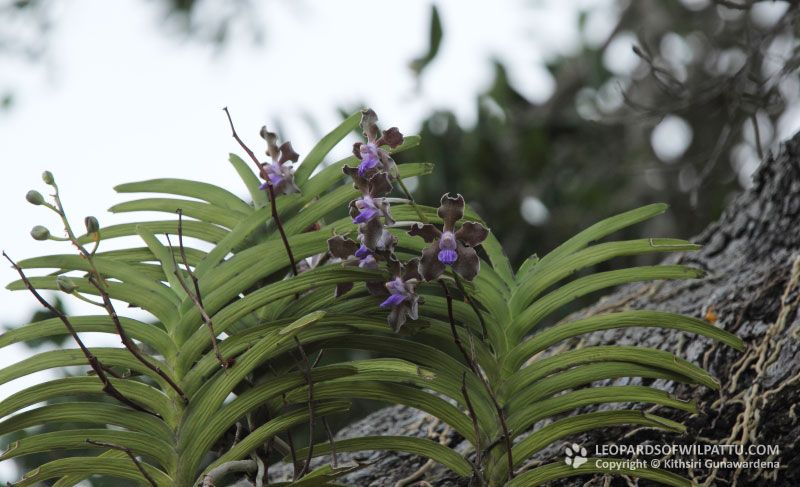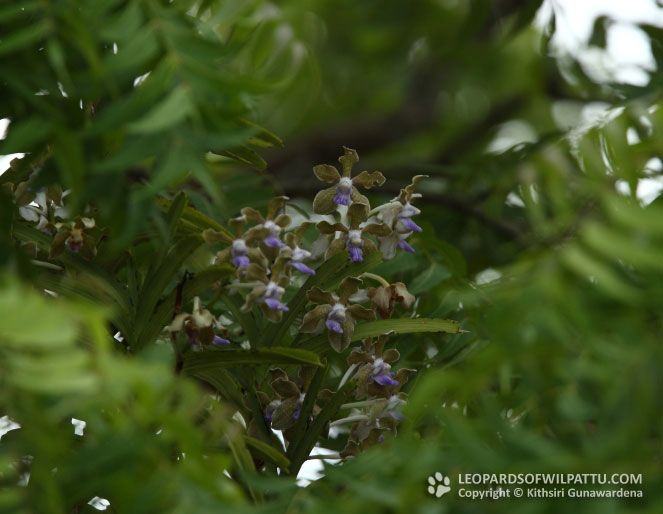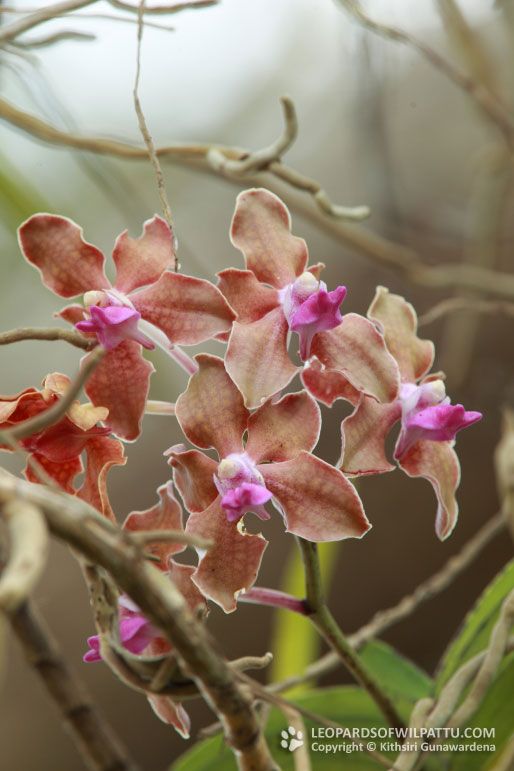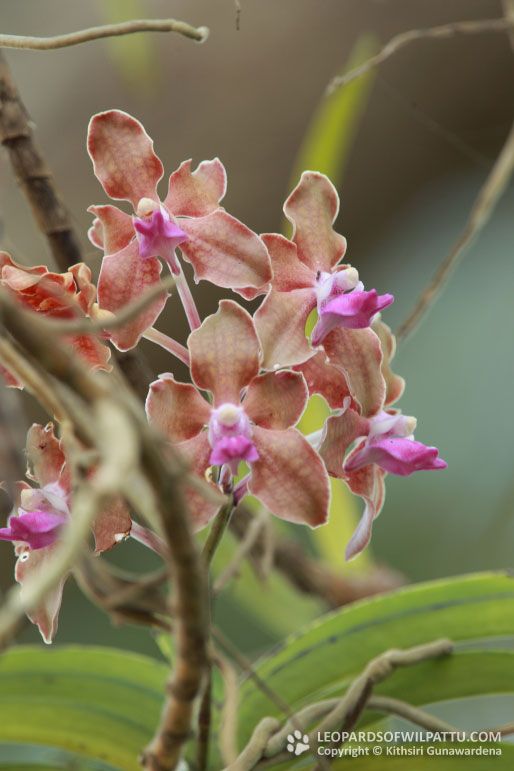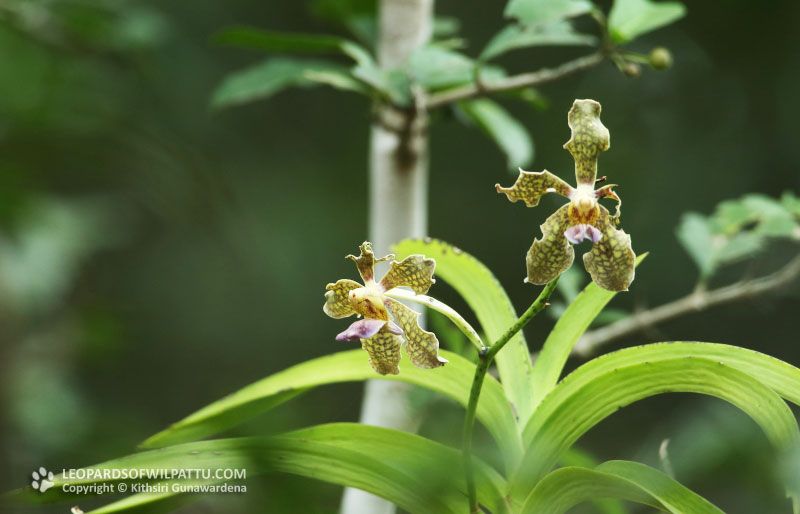
Wild Orchids ‹‹ Go Back
This is an indigenous species, which is also found in India, Nepal, Myanmar and China. There are 4 species of orchids of this genus found in the country. Of these Vanda testacea, Vanda tessellate and Vanda spathulata are relatively common in suitable habitat. Even though a fourth species of this genus, Vanda thwaitesii, has been reported in the past no specimens have ever been collected and also there are no authentic records of the same being observed in the wild. All these four Vanda species are epiphytic orchids that grow on trees. The conservation status of the species under reference is regarded as Vulnerable (National Red List 2012).
Vanda tessellate is a species protected under the Fauna and Flora Protection Ordinance as amended by Act No. 22 of 2009.
This species is found throughout the tropical dry mixed evergreen forests in the dry zone and along the eastern coast of the country. The typical colour of the flowers is grey, with darker markings and a blue-purple lip. However many colour varieties have been recorded including greyis blue, red, pink yellow etc. I have seen this species in all the forested areas in the dry zone including Kurunegala, Anuradapura, Nawadankulama, Minneriya & Kaudulla National Parks, Udawalawa National Park, Gal Oya National park Lunugamvehera, Vdathalthivu, Devils Point, Jaffna, Ritigala, Dolukanda, Puttlam, Anavilundawa, Dolukanda, Padiyathalawa, Habarana, Wilpattu, Wilachchiya, Settikulama, Omanthai, Trincomalee, Batticaloa, Maho, Medavachchiya, Vauniya, Yala National Park, Kilinochchi, and Kumana National Park.
Even though this species is protected by law, one of the biggest threats to the conservation of the more colorful forms of this orchid is the removal of plants by private orchid collectors. Secondly the cutting down of mature host trees from areas out side the protected reserves for development purposes including road expansion projects.
Nilgiri Tit, a species of butterfly, lays its eggs on the flowers of this species. The caterpillars that emerge are well camouflaged amongst the flowers and will feed on the flowers until they move away from the plant in order to form themselves in to chrysalises.
In Wilpattu the orchid that can be seen on the trunks of most Palu Manilkara hexandra trees belong to this species. In Wilpattu I have observed flowers of this species throughout the year except in October and November. I have photographed the flowers of this species at Thambi Oluwa, Maradanmaduwa, Demata Wila, Thimbiri Wila, Borupan Wila as well as at Ochchappukallu. On 17th of May 2011 I photographed the rare pink coloured flowers of this species in block IV of the park.
In order to ensure long term conservation of this species it is important to preserve its existing natural populations in parks such as Wilpattu, and protect the host trees on which this orchid grows even out side protected areas.

